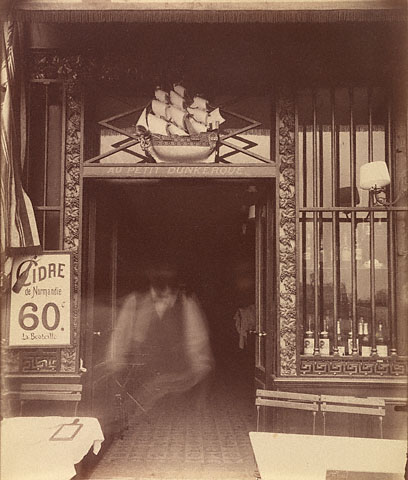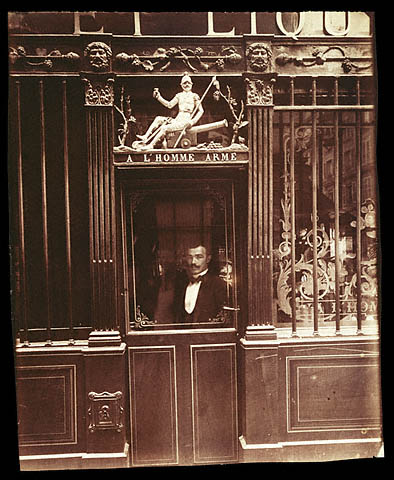|
October 7, 2010
As is well known Eugene Atget’s archive is of the premodern city of Paris both its places and its people. He photographed old streets, old courtyards, the interiors of shops, bars, markets, junk shops, horse-drawn tramways, carriages and wagons, fountains, bridges, barges, churches, doorknobs.
 Eugene Atget, Quai, Conti 3 Paris, 1900 Albumen
Eugene Atget, Quai, Conti 3 Paris, 1900 Albumen
Atget also photographed the street commerce that was archaic: flower-sellers, rag-pickers, street musicians, garbage collectors, prostitutes, beggars and tramps. He turned the artefactual remains of the Ancien Régime into a vast photographic archive.
In How Modernity Forgets Paul Connerton says that Atget’s photography represented a counter movement to the transformation of Paris by Baron von Haussmann.
He says:
Between 1900 and 1920 Atget assembled an enormous photo- graphic archive of Parisian artefacts dating from the Ancien Régime to the mid nineteenth century. He was reacting to the enormous topographical transformation of Paris since the mid nineteenth century, which had proceeded in two phases. In the first phase, under Haussmann, twenty-two new boulevards were begun, avenues such as Lafayette, Rivoli and Kléber were constructed, and the Solferino, Alma and Change bridges were built across the Seine. These vast new designs required the destruction of many existing structures, particularly in the Latin Quarter and the Île de la Cité. Then, in a second phase, between 1892 and 1902, 171 new streets were constructed; the western extension to the Rue Réaumur on the Right Bank from Saint-Denis to Notre-Dame-des-Victoires was established in 1895–6; the Rue du Louvre was linked at its northern end with the Rue Montmartre in 1906; and the Boulevard Raspail was joined to the Rue Montparnasse in 1890. These changes, once again, meant the sacrifice of existing structures, as when sections of the 1st arrondissement, especially the Rue des Deux-Écus, were demolished in 1907.
He adds that these vast transformations provoked a counter-movement to resist the persistent destruction and that Atget was a part of this countermovement.
Between 1890 and 1895, de Champeaux produced a detailed series of illustrated articles on the decorative ornamentation of old Parisian architecture in the Gazette des Beaux-Arts; in 1903 the Marquis de Rochegude’s Guide à travers le vieux Paris appeared; and in November 1897 an official body, the Commission municipale du vieux Paris, was established to resist the persistent destructions. Atget’s photo- graphic archive is situated within this movement of resistance to the new place-world of Paris at the opening of the twentieth century. The invention of photography formed a cultural counter-weight to the invention of railways; the latter produced speed, the former created stillness; the latter unsettled remembering, the former gave it a new sedimentation. But it was not so much the production of speed as rather the repeated destruction and restructuring of the built environment that most preoccupied Atget, and against which he fought a kind of rearguard cultural campaign for twenty years.
A photography of cultural memory. Eugène Atget never called himself a photographer; instead he preferred "author-producer."
 Eugene Atget, Restaurant, rue des Blancs Manteaux, Paris, 1900, Albumen print
Eugene Atget, Restaurant, rue des Blancs Manteaux, Paris, 1900, Albumen print
Atget carried a large-format view camera, an outdated, cumbersome outfit, through the streets and gardens of Paris, usually photographing around dawn; many of these areas--storefronts and public spaces in nineteenth-century Paris and Versailles--were demolished soon afterward to make way for rapid urbanization.
|
|
